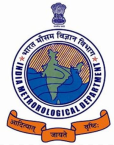Indian Meteorological Department (IMD): Difference between revisions
No edit summary |
No edit summary |
||
| Line 68: | Line 68: | ||
== Latest News/Current Affairs == | == Latest News/Current Affairs == | ||
# Prime Minister launched '''‘Mission Mausam’''' with the goal of making our country a ‘Weather-ready and Climate-smart’ nation. | # '''<u>Mission Mausam</u>'''<ref>News Sources</ref> - | ||
#* Prime Minister launched '''‘Mission Mausam’''' with the goal of making our country a '''‘Weather-ready and Climate-smart’ nation'''. | |||
#* This mission aims to achieve this by '''developing cutting-edge weather surveillance technologies and systems''', implementing high-resolution atmospheric observations, next-generation radars and satellites, and high-performance computers. | |||
== References == | == References == | ||
Revision as of 07:05, 16 January 2025
Indian Meteorological Department (IMD) is an agency of the Ministry of Earth Sciences of the Government of India. It is mainly responsible for meteorological observations, weather forecasting and seismology.
| Overview |
|---|
 |
| Established: 15th January 1875
Headquartered: Delhi Under: Ministry of Earth Sciences, GoI Director General: Mrutyunjay Mohapatra. Main Aim: Meteorological Observations, weather forecasting and seismology. Website: https://mausam.imd.gov.in/ Indian Prime Minister Narendra Modi launched "Mission Mausam". |
- Headquarters – Delhi
- Formed in 15 January 1875.
- IMD is also one of the six Regional Specialised Meteorological Centres of the World Meteorological Organisation (WMO).
History of IMD
- The first meteorological observatories were established in India by the British East India Company. These included the
- Calcutta Observatory in 1785,
- Madras Observatory in 1796,
- Colaba Observatory in 1826.
- The Asiatic Society, founded in Calcutta in 1784 and in Bombay in 1804, promoted the study of meteorology in India.
- After a tropical cyclone hit Calcutta in 1864, and the subsequent famines in 1866 and 1873 due to the failure of the monsoons, it was decided to organise the collection and analysis of meteorological observations under one roof. As a result, the India Meteorology Department was established on 15 January 1875.
- In May 1889, Sir John Eliot was appointed the first Director General of Observatories in the erstwhile capital, Calcutta.
- The IMD headquarters were later shifted to Shimla in 1905, then to Pune in 1928 and finally to New Delhi in 1944.
- IMD became a member of the World Meteorological Organisation after independence on 27 April 1949.[1]
Structure of IMD
- Headed by the Director General of Meteorology, currently Mrutyunjay Mohapatra.
- 6 Regional Meteorological Centres, each under a Deputy Director General that are at
- Chennai,
- Mumbai,
- Kolkata,
- Nagpur,
- Guwahati and
- New Delhi.
- Also a Meteorological Centre in each state capital.
- Other IMD units such as Forecasting Offices, Agrometeorological Advisory Service Centers, Hydro-meteorological Office, Flood Meteorological Offices, Area Cyclone Warning Centers and Cyclone Warning Centers are usually co-located with various observatories or meteorological center.
Functions of IMD
- Additional data is received from India’s constellation of satellites, such as Kalpana-1, Megha-Tropiques and instruments on board the IRS series and the INSAT series of satellites.
- IMD was the first organisation in India to deploy a message switching computer for supporting its global data exchange.
- IMD also operates seismic monitoring centres at key locations for earthquake monitoring and measurements.
- IMD also uses the IRS series and the Indian National Satellite System (INSAT) for weather monitoring of the Indian subcontinent.
- IMD was first weather bureau of a developing country to develop and maintain its own satellite system.
- To take meteorological observations and to provide current and forecast meteorological information for optimum operation of weather-sensitive activities like agriculture, irrigation, shipping, aviation, offshore oil explorations, etc.
- To warn against severe weather phenomena like tropical cyclones, norwesters, duststorms, heavy rains and snow, cold and heat waves, etc., which cause destruction of life and property.
- To provide meteorological statistics required for agriculture, water resource management, industries, oil exploration and other nation-building activities.
- To conduct and promote research in meteorology and allied disciplines.[2]
Initiatives of IMD
- SAMAR –
- Launched January 2016
- Main Aim is to study the concentration of Black carbon, radiative properties of aerosols, environmental visibility and their climatological impacts.
- It would contain a network of 16 aethalometers, 12 sky radiometers and 12 nephelometers.
Latest News/Current Affairs
- Mission Mausam[3] -
- Prime Minister launched ‘Mission Mausam’ with the goal of making our country a ‘Weather-ready and Climate-smart’ nation.
- This mission aims to achieve this by developing cutting-edge weather surveillance technologies and systems, implementing high-resolution atmospheric observations, next-generation radars and satellites, and high-performance computers.
References
- ↑ Wikipedia
- ↑ IMD Govt Website | https://mausam.imd.gov.in/responsive/mandate.php
- ↑ News Sources
